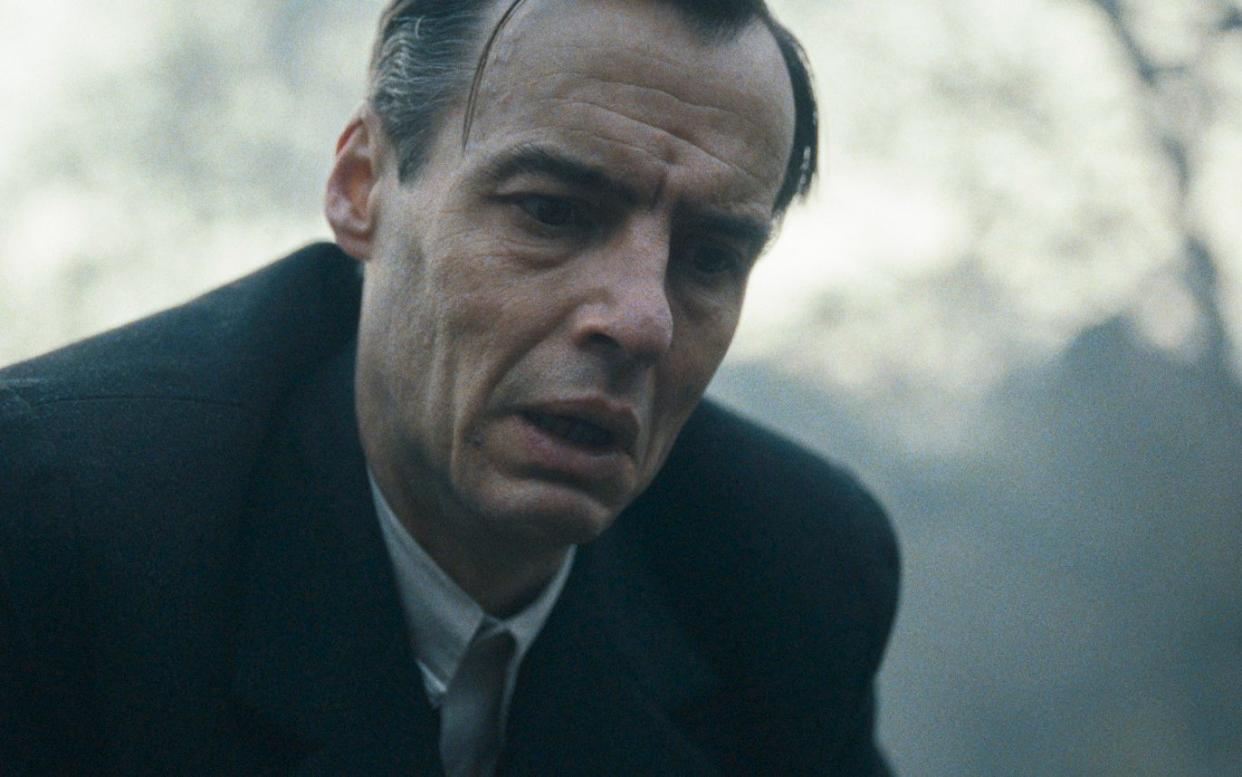Earwig: beetles about elegantly but incoherently

Teeth made of ice? Earwig, the first English-language effort from French cult favourite Lucile Hadžihalilović (Innocence; Evolution), certainly starts off in an intriguingly oddball place. In a labyrinthine apartment in Liège, at some time in the early-to-mid 20th century, a morose scientist called Scellinc (Paul Hilton) is at work on the dentistry of young Mia (Romane Hemelaers), whose gnashers are refrozen from her own saliva and reinserted, using custom mouth-pieces, on a daily basis.
The “whys” of this situation are never forthcoming – that’s not Hadžihalilović’s style. She’s working here from a surreal 2019 novella by the multidisciplinary sculptor/poet/performance artist Brian Catling, and goes to town, as ever, on languorous atmospherics.
Hers are the kind of fantasy-horror films in which you can almost smell the wallpaper; symbols are centre stage. When Mia wanders the nooks of this place, trailing a kite she’s made from old newspaper fragments, she’s like one of the waifs illustrated by Edward Gorey in his Gashlycrumb Tinies – one who has yet to meet her allotted fate, perhaps. The first time we go outside, on a spooky autumnal walk with Scellinc, Mia nearly drowns herself in a pond, wearing a red overcoat that makes the scene an obvious hat-tip to Nicolas Roeg’s Don’t Look Now. At this moment, a stranger called Céleste (Romola Garai) is watching aghast from a bridge, and in her second scene, while serving in a bar, this new character is violently attacked with a beer bottle to the face, leaving her a disfigured wreck.
If these episodes sound randomly organised, that’s simply the way the script puts them over. It takes a special kind of alchemy – David Lynch is still the master – to get such an accretion of odd incidents to make sense side by side. What’s missing in Earwig is the poetic glue, if you like.
Hadžihalilović’s films tend to feel longer than they are, and this one succumbs to a soul-sick drift – redolent, no doubt, of Europe’s interwar ennui, but pretty tedious in the moment. You find yourself begging, not necessarily for more to happen, but for more intelligible logic to propel us from one happening to the next.

There’s a promising idea – another one – in the oil painting Scellinc keeps staring at, which depicts an old château he used to inhabit, with elements (an abandoned crib) appearing which were previously not there. This MR James-ian artwork may excite us momentarily, if we know the creeping horrors of James’s classic short story The Mezzotint, but then it lets us down: it’s a full hour before we even get another peep.
It’s hard to know how a moustachioed young man called Laurence (Alex Lawther), who tends to Céleste’s recovery, quite fits, except that he often seems like a younger version of Scellinc; the film’s time-lines are opaque and remain so. Lawther has an insinuating smugness, and Garai, in her small-ish part, is rather excellent.
Hilton, often so detailed, has the hardest character to read, who annoyingly happens to be our protagonist. He could have done with the sly Freudian psychology guiding Ralph Fiennes, say, in David Cronenberg’s Spider – a mystery with a sense of humour this misses altogether. Even when Hilton’s doing little but obscurely scowling, it feels like he’s going overboard.
This is at the very least a beautifully designed failure, marrying crepuscular photography with faultless art direction, and blessed by a gorgeous, otherworldly score by Augustin Viard, a specialist in the ondes Martenot. It looks and sounds so darkly inviting – but sends you home unsated.
15 cert, 114 min; in cinemas from Friday June 10

 Yahoo News
Yahoo News 
